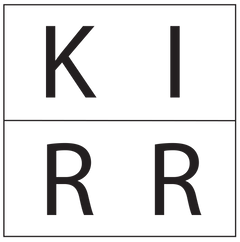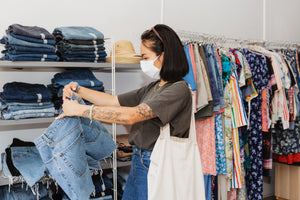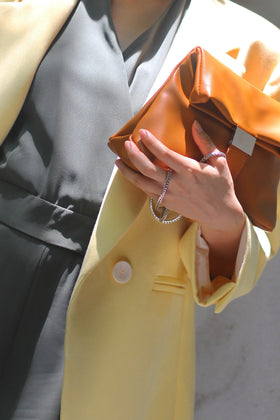
KIRRLiving: Sustainable Fashion: A Fabric Deep Dive by Christine Chow
In my experience manufacturing for major international brands, commercial designers usually select fabrics for their appearance and price. At Tove & Libra, we like to put some added thought towards various fabrics’ impact on the planet.
Natural fibers

While natural fibers seem like a natural fit for eco-conscious fashion - as they are fully biodegradable - this doesn't mean the use of natural fibers is without any downsides.
While cotton is probably the most popularly used natural fiber, what’s less-known is that its production process is incredibly resource-intensive. Around 2.5% of the world’s arable land is currently used for cotton growing, but it uses 7% of all pesticides and 16% of all insecticides globally. Meanwhile, the production of just one kilogram of cotton fabric can consume 10,000 liters of water, and even more is used when it comes to the dyeing and washing of denim jeans!
Is organic cotton the obvious answer? Organic cotton rules out the use of synthetic pesticides and additives, so that’s a plus for the environment as well as the wearer. However, what’s often less acknowledged is that organic cotton plants have 25% lower yield than conventional, meaning an organic cotton T-shirt would potentially consume the same or more resources in the end.
I think the recent popular embrace of organic cotton by fast fashion hides the fact that the industry actually generates as much textile waste as ever. In fact, as with most garments, the most responsible way to own cotton is to buy fewer but better.
So what’s a good natural alternative?
Linen is a top choice for anyone looking to make better ecological choices for their closet. This fiber comes from the flax plant, and it is naturally moisture-wicking, making it perfect for wearing in humid climates like Hong Kong!
The production of flax has a relatively low environmental impact, requiring minimal water and pesticides. Besides, the whole flax plant can be used, from the linen fabrics to linseed oil, which means less waste.
Merino wool (a fine wool specifically derived from Merino sheep) is also a fantastic natural fiber which doesn’t seem to get a lot of love. Its amazing range of natural performance benefits include being naturally thermo-regulating, stain-resistant and hypoallergenic. It is lightweight and soft, yet strong, which makes it an excellent layering piece whether for wearing to all-day meetings, or an overnight camping trip! Additionally, as Merino wool is naturally both anti-microbial and odor-resistant, you can get away with washing it less often, which reduces its eco impact over its lifecycle.
Synthetic Fibers

Meanwhile, synthetics fabrics may sometimes get a bad rap. But I believe they have the ability to add both function and longevity to garments – when used in the right way. So while that cheap polyester dress is likely to fall apart or trend out after a few wears, a responsibly-designed synthetic garment that is comfortable and functional can actually help you purchase less in the long run.
A “quality over quantity” mantra is especially important when shopping for synthetics. While rayon and viscose have risen in popularity due to their appealing softness combined with low prices, these fibers come from varying sources and in varying quality levels.
Rayon and viscose belong to a group of “semi-synthetics”, where cellulosic fibers are derived from various types of commercial wood pulp. The wide embrace of these fibers by fast fashion brands has led to a spike in the depletion of some forests for this purpose.
Generally, you will probably get what you pay for - cheap rayon items will likely tear, crease or pill quite easily, besides probably having been produced with lax environmental standards.
High-quality fibers will be sourced from well-managed forests, and will keep their lustre and smoothness over many washes.
An alternative semi-synthetic we have embraced at Tove & Libra is Tencel® (also generically known as lyocell). This breakthrough fiber is produced in a closed-loop production process that minimizes waste. Its consumption of dyes and energy is relatively low, which means that it uses less resources to produce than many traditional fabrics, synthetic or natural.
The finished product is a win from multiple perspectives: Lyocell is just as breathable as cotton, while rivalling the softness and smoothness of silk. It is also durable and easy to care for.
I hope I have encouraged you to look a little more closely at content labels, the next time you go shopping!
Christine Chow is co-founder and Creative Director of Tove & Libra, an independent brand using sustainable materials and processes to provide better fashion choices for the modern woman.
Click HERE to shop TOVE & LIBRA on KIRR






Leave a comment